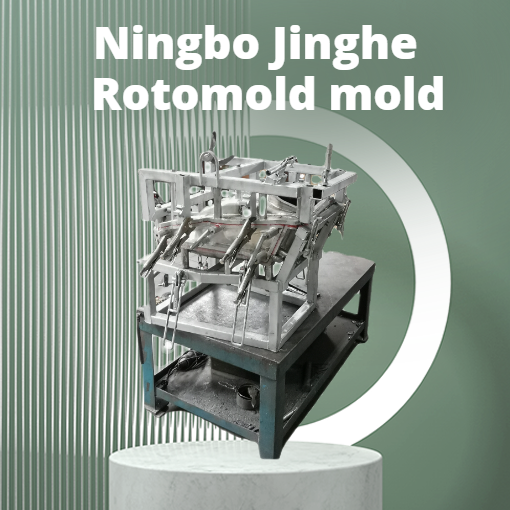Rotational molding, also known as rotational molding, rotary molding, rotary molding, etc., is a hollow molding method of thermoplastics.
The method is that plastic raw materials are first added into the mold, and then the mold is continuously rotated along two vertical axes and heated.
Under the action of gravity and heat energy, the plastic raw materials in the mold are gradually evenly coated, melted and adhered to the entire surface of the mold cavity, formed into the desired shape, and then cooled to shape to form the product.
Principle of rotational molding
The basic processing process of rotational molding is very simple.
The powder or liquid polymer is placed in the mold and heated. At the same time, the mold rotates and revolves around a vertical axis, and then is cooled for molding.
At the beginning of the heating stage, if the powder material is used, a porous layer is formed on the surface of the mold first, then gradually melts with the cycle process, and finally a homogeneous layer of uniform thickness is formed;
If liquid material is used, flow and coat the surface of the mold first, and stop flowing completely when the gel point is reached.
The mold is then transferred to the cooling work area, cooled by forced ventilation or water spraying, and then placed in the work area, where the mold is opened, the finished parts are taken away, and then the next cycle is carried out.
Advantages of Rotational Design
Compared with other mold processes, the rotational molding process provides us with more design space.
Under the correct design concept, we can combine several parts into a complete mold, which greatly reduces the high assembly cost.
The rotational molding process also includes a series of inherent design thinking modes, such as how to adjust the thickness of the side wall and how to strengthen the external settings.
If we need to add some auxiliary designs, we can also add the strengthening rib line to the design.
Rotational molding technology injects endless imagination of designers into the products.
Designers can choose the best materials in the production process, including various materials approved by the Food and Drug Administration.
The additives added in the production process can effectively resist the invasion of climate, static interference and other external objective factors.
In the design process, the insertion port, thread, handle, inverted device and perfect surface design are all the highlights.
Designers can also design multi wall molds, which can be hollow or filled with foam.
Post time: Oct-31-2022





